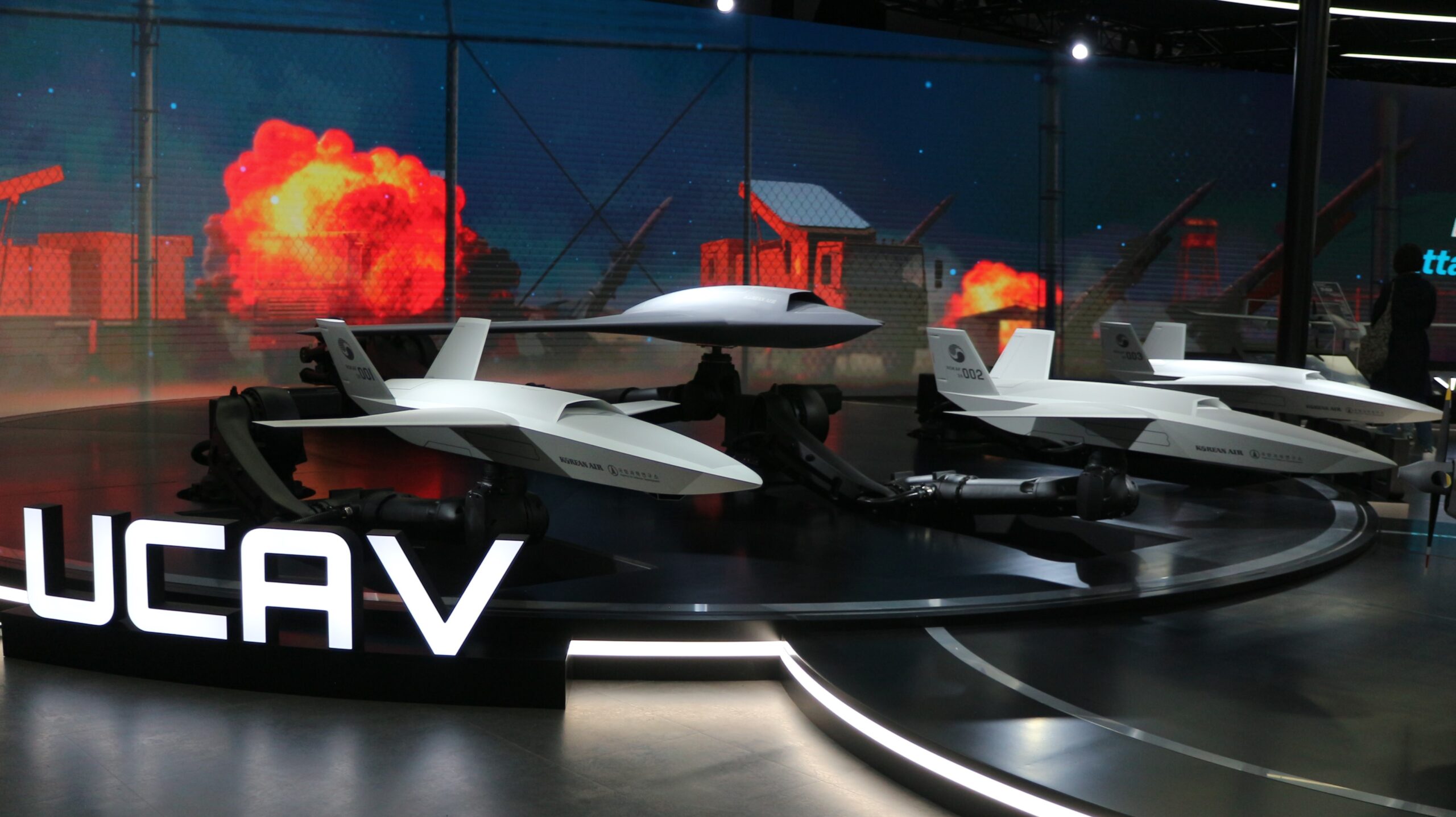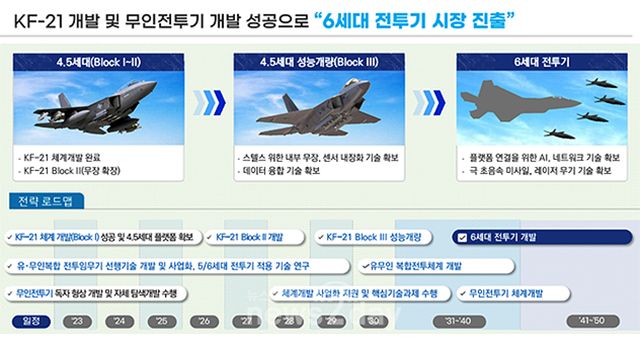On Tuesday, January 30, an official of the South Korean Ministry of Defense said that top representatives of the ministry and the Agency for Defense Development (ADD) paid an unannounced visit to Saudi Arabia on January 23-26. He noted that the South Korean delegation met with Saudi Arabia’s Deputy Defense Minister Dr. Khalid bin Hussein Al-Biyari and other officials to discuss the joint development of a 5th or 6th generation multi-role aircraft based on the KAI KF-21 Boramae design (Korea: KF-21 Boramae serial production this year).
 Visualization of KF-21 Boramae with unmanned aerial vehicles using MUM-T technology / Image: DAPA
Visualization of KF-21 Boramae with unmanned aerial vehicles using MUM-T technology / Image: DAPA
In July 2023, Saudi Arabia expressed its willingness to participate in the program for the development of 6th generation multi-role aircraft, codenamed GCAP (Global Combat Air Program), together with Great Britain, Italy and Japan. Insofar, London and Rome responded positively on this matter, but Tokyo expressed opposition to Saudi Arabia’s participation because the GCAP program could be delayed by it. This is also due to the fact that it is not clear whether Japan will agree to the transfer of technology, due to the close military relations between Saudi Arabia and China.
To gain an advantage in the development and export of new-generation combat aircraft from other countries, South Korea proposes to countries in Southeast Asia and the Middle East, especially the United Arab Emirates and Saudi Arabia, to jointly develop the KF-21 and its successor.
 Loyal wingman KUS-LW and KUS-FC – unmanned aerial vehicles developed by the Korean Air Aerospace Division (KAL-ASD) research institute / Photo: Hyunmin Park, MILMAG
Loyal wingman KUS-LW and KUS-FC – unmanned aerial vehicles developed by the Korean Air Aerospace Division (KAL-ASD) research institute / Photo: Hyunmin Park, MILMAG
The next generation of combat aircraft, the concept of which South Korea presented this time in Saudi Arabia, is the joint development of the 5th generation KF-21 Block 3 aircraft and the 6th generation aircraft based on the KF-21.
KF-21 Block 3 is a proposed development of the KF-21 Boramae, thanks to which the aircraft will have a radar cross-section (RCS) at the level of the F-35A Lightning II aircraft and the ability to control unmanned combat aerial vehicles (UCAV), the so-called loyal wingman. According to the Korean side, the stealth technologies of the KF-21 aircraft and KUS-LW and KUS-FC unmanned aerial vehicles (photo above) have achieved the required performance because the development and research of these technologies has continued since 1996. The KF-21 Block 3 is only mentioned for now, but it is expected that the development program for this version will begin when the need arises after testing in the Republic of Korea Air Force (ROKAF) after 2026.
In addition, the ROKAF has started a review of the development of 5.5/5+ generation combat aircraft in 2022. In response, Korea Aerospace Industries (KAI) proposed a 6th generation aircraft program, which would involve increasing the size and design capabilities of the KF-21. This would be a similar step taken by Boeing, constructing the F/A-18E/F Super Hornet based on the F/A-18C/D Hornet. It was analyzed that in this way it could be developed quickly and with cost savings.
In particular, the 6th generation aircraft needs increased thrust and propulsion power, and on December 26, 2023, the Defense Acquisition Program Administration (DAPA) announced that it would begin conceptual research on the development of a Korean aircraft engine and complete the works in the 2030s.
 Proposed development of the KF-21 and 6th generation combat aircraft / Infographic: KAI
Proposed development of the KF-21 and 6th generation combat aircraft / Infographic: KAI
Compared to the KF-21 Block 1 and Block 2, development of the KF-21 Block 3 or 6th generation aircraft will be extremely expensive, and South Korea has demonstrated the concept of such an initiative, identifying demand from the United Arab Emirates and Saudi Arabia. As a result, it was possible to propose the joint development of new generation aircraft to Middle Eastern countries, highlighting the advantages of KF-21 Block 3 or 6th generation aircraft compared to other programs, such as lower costs, lower risks and faster start of production.





Comments
Nobody has commented on this article yet.